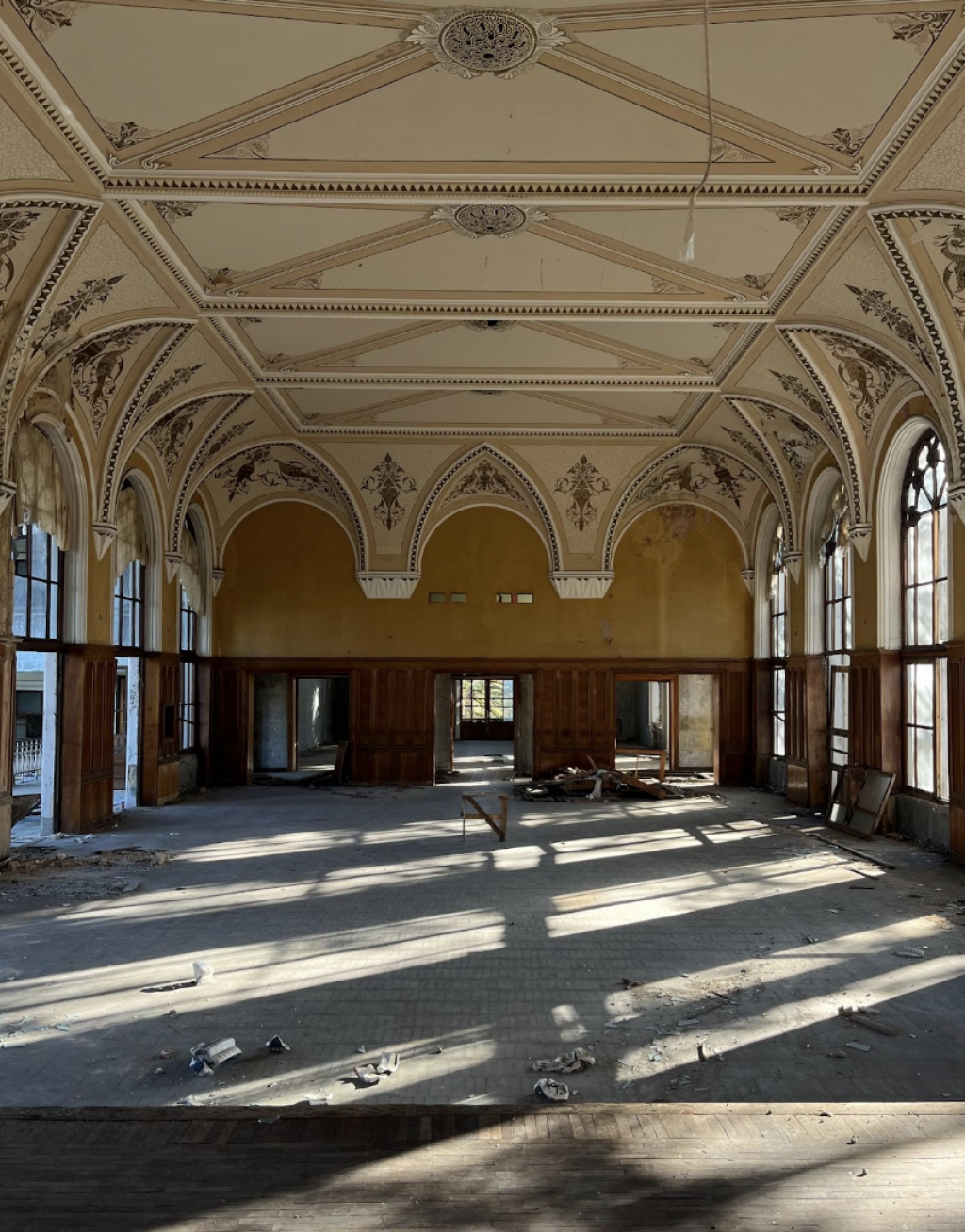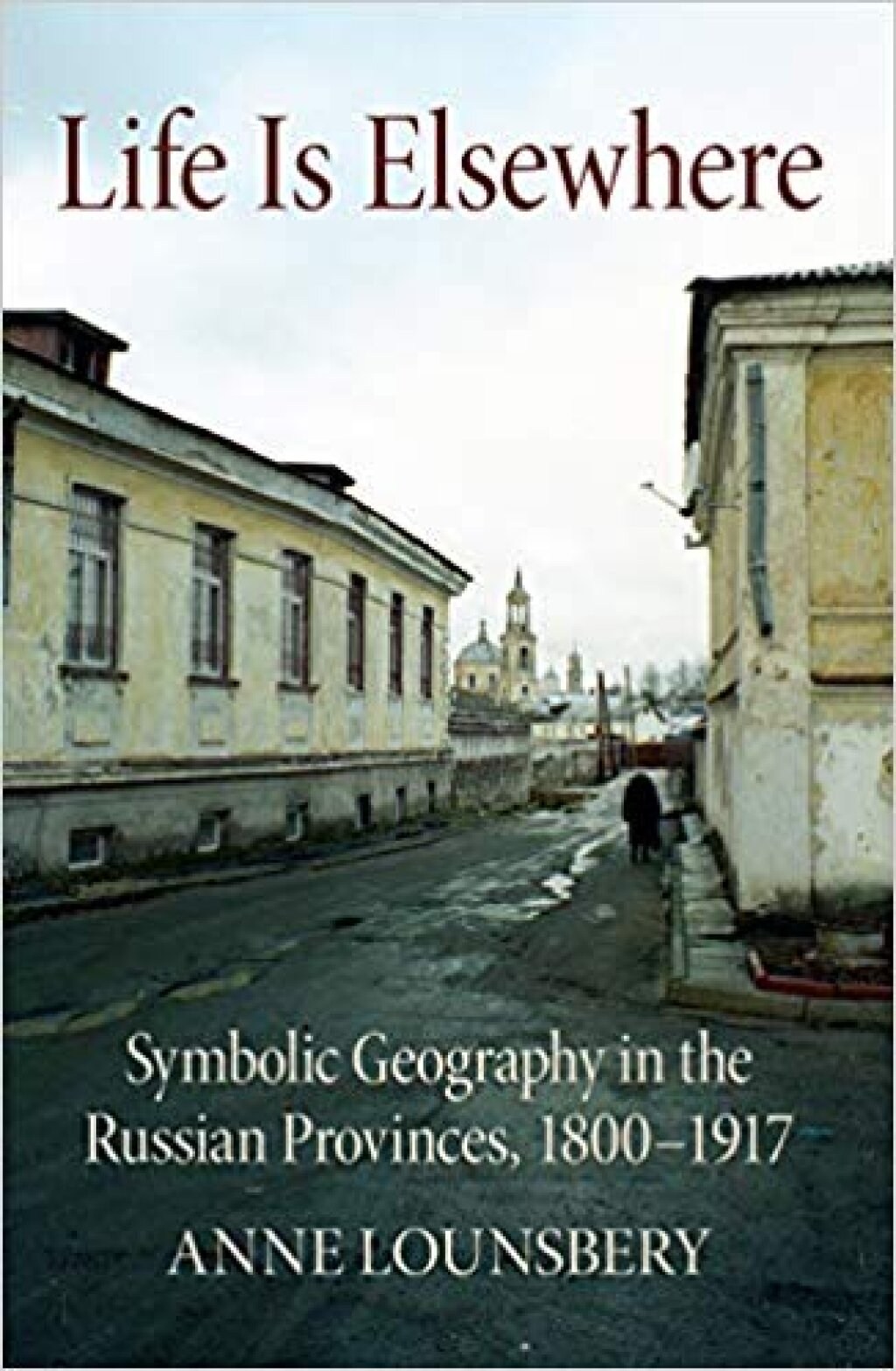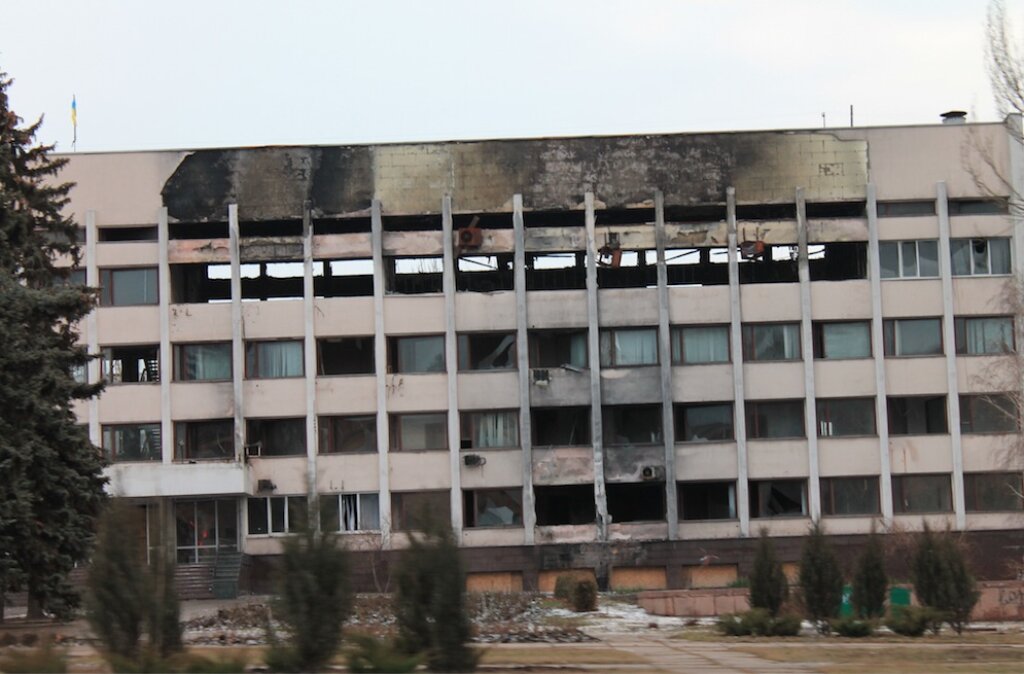Zuzanna Lin-Iwanejko holds an MA in Russian, Eurasian, and East European Studies from Columbia University. She is interested in post-Soviet infrastructure and architecture.
This post won a Judges’ Choice Prize in the Jordan Center Blog's fifth annual Graduate Student Essay Competition.
Located in Western Georgia, Tskaltubo was once a premier curative destination for Soviet workers. Its reputation as a retreat for health, rest, and rejuvenation extended far beyond its mineral-rich waters. It was a display of Soviet power and ambition, an emblem of what a communist utopia might look like.
Today, the marble foyers and neoclassical columns obscure the historicity of these health resorts. They appear ancient, mythological, out of place, and out of time, creating fertile ground for misleading narratives. The remains of Soviet-era revolutionary dreams lie at the heart of battles over memory, displacement, and privatization among post-Soviet Georgia’s political elites.
Ennobled by their ruination, these Soviet-era health resorts or sanatoria attract thousands of foreign tourists, urban explorers, and photographers, all drawn in by the romance of decay. Described in blog posts and photo essays as “abandoned” and “derelict,” or as relics of “Stalinist” architecture, these buildings are often framed as empty, devoid of their former ideological significance, passively awaiting revitalization. If profit-driven developers get their way, some of these sites could become luxury retreats.
Yet places like Tskaltubo retain an importance beyond their status as potential future playgrounds for the wealthy. In 1992, a year and a half after the collapse of the USSR, the conflict over the Republic of Abkhazia, a separatist state in the Southern Caucasus, escalated into full-scale violence. At that time, 250,000 ethnic Georgians became displaced, with approximately 10,000 of them being relocated to the vacant sanatoria in Tskaltubo.
The arrival of internally displaced persons (IDPs) strained the fragile, newly independent local economy. With minimal support from the Georgian government, the IDPs relied on international aid and community support to render the living conditions in the sanatoria suitable for temporary residency. For many, what was supposed to be a short-term solution turned into over twenty years of precarious living.
Although the IDPs in Tskaltubo share cultural, ethnic, and linguistic ties with the broader Georgian population, their displacement, economic hardship, and regional background have long fueled discrimination and limited their social mobility. The relationship between the IDPs and local Georgians is mediated through the buildings they inhabit. Much of the locals’ resentment stems from the IDPs’ prolonged stay in the sanatoria and their appropriation of the space, including the removal of floorboards for firewood or stripping of building materials for sale.
Yet in at least one location—Sanatorium Metallurgist—these adaptations evolved into a form of communal entrepreneurship. The remaining inhabitants have taken on the role of unofficial caretakers, maintaining the building and even organizing informal tours for curious tourists at a modest fee of 10 GEL (about 0.37 USD as of this writing).
It’s a subtle but significant shift that reveals an alternative economy emerging within the buildings, where IDPs are not just passive occupants, but actively engage with growing tourist interest in Tskaltubo’s past. The transformation of Tskaltubo demonstrates architecture's enduring power both as a tangible space and a site of contested memory and political erasure. Here, what is visible—grand neoclassical facades—pushes the IDPs as political subjects into the realm of invisibility.
This tension is readily instrumentalized by Georgian Dream, the country’s ruling political party since 2012. In 2019, the Ministry of Economy unveiled its “Six-Point Plan” that proposed to plan infrastructural projects, unify the resort town’s administration, and relocate nearly five thousand IDPs into permanent housing units on the outskirts of Tskaltubo and in other parts of Georgia. Today, fewer than fifty people remain in the sanatoria. With this plan, the Georgian government aimed not only to restore the spa town to its former glory, but also promised to transform it into a world-renowned resort for international and local visitors.
By October 2019, Georgian oligarch and leader of Georgian Dream, Bidzina Ivanishvili, made a statement proclaiming his willingness to buy all 22 sanatoria and nine bathhouses in Tskaltubo. However, the pledge proved to be empty. In 2022, another revitalization plan called “New Life for Tskaltubo” was launched to prepare fourteen sanatoria for investment at privatization auctions to wealthy foreign investors. This maneuver effectively functioned as a conduit for further corruption within the party. Earlier investors withdrew from their agreements after failing to meet their investment commitments, which required them to contribute a set amount toward the sanatorium’s development within a designated timeframe. In 2023, the Qatari company Golden Tower Invest Group purchased one sanatorium for 12 million GEL ($4.5 million USD) with investment obligations of 35 million GEL (13 million USD).
The latest restoration plan, announced in July, 2022 is the result of years of debate over the future of the spa town. It is supported by a number of tourism feasibility studies, including university research projects and reports conducted by international firms like the American real estate company Cushman and Wakefield (2021) and the Swiss consultancy firm Kohl & Partners (2020).
These studies demonstrate increased interest in the restoration of the tourism industry in Tskaltubo on the part of both foreign and domestic investors, who are motivated by the region’s persistently high unemployment rates and the indisputable allure of the grand buildings. Notably, however, none of these studies mentions the IDPs still living in the former sanatoria, nor do they propose solutions for their resettlement.
Instead, promotional materials framing Tskaltubo as a destination for heritage tourism have effectively omitted information about IDP habitation. This tactic is congruent with a broader global trend in which heritage tourism glosses over histories of displacement and deepens risks for the most vulnerable. Despite the government’s promises to elevate local standards of living, both IDPs and local Georgians continue to face high employment and limited opportunities. While visitors to Tskaltubo have the privilege of aestheticizing the palatial ruins of former sanatoria, the IDPs cannot see their surroundings as anything but the product of marginalization and negligence by the Georgian state.
As of 2025, only four of Tskaltubo’s sanatoria have been privatized. Among them is Sanatorium Tbilisi, which, though once in a state of disrepair, has finally undergone a long-awaited reconstruction. Foreign investors accelerated the revitalization process with the goal of restoring the sanatorium to its original condition. Their vision was to establish it as a year-round wellness destination, capitalizing on Western Georgia’s mild climate and the curative radon-containing waters. According to construction workers on site, the new clientele is expected to consist of wealthy Russians eager to relive the grandeur of Soviet-era splendor. This transformation highlights the shifting ownership of Tskaltubo’s sanatoria over time, from Soviet state control to private hands in capitalist Georgia, ultimately serving the very descendants of the former Soviet elites.
Prioritizing the sanatoria’s Soviet-era legacy over their more recent role as shelters for displaced people erases a vital chapter of Tskaltubo’s history. This selective memory, reinforced by official narratives and tourist imagery, reduces the buildings to symbols of aesthetic nostalgia rather than lived spaces of resilience and adaptation. Moreover, although the neoclassical grandeur of Soviet-era monumentalism continues to attract thousands of tourists every year, an overreliance on tourist money ultimately limits possibilities for the meaningful investment the town truly needs. Without acknowledging the full, complex life of these structures—and the communities that sustained them—Tskaltubo risks becoming a stage set for curated memory rather than a space for a collective future.




